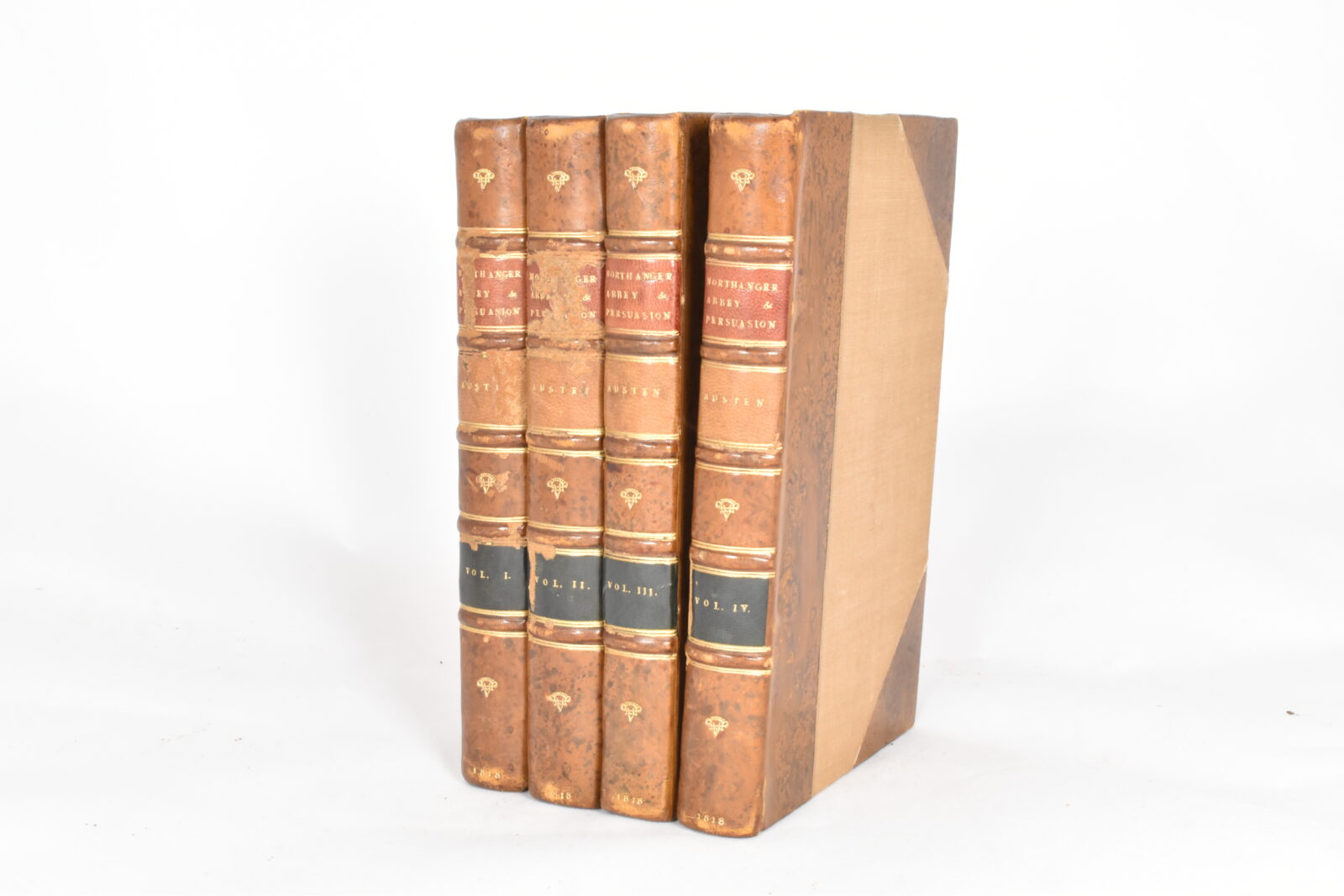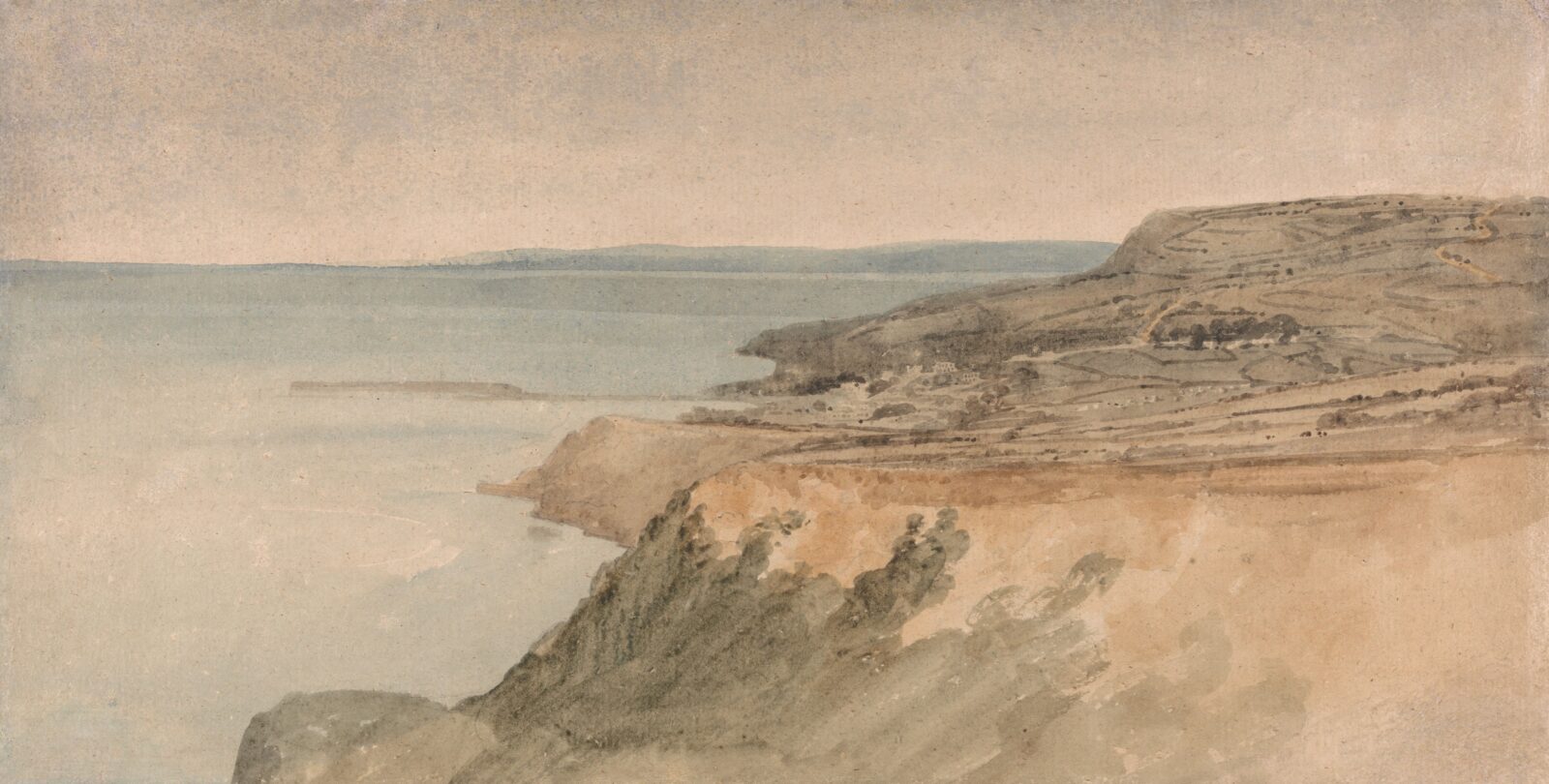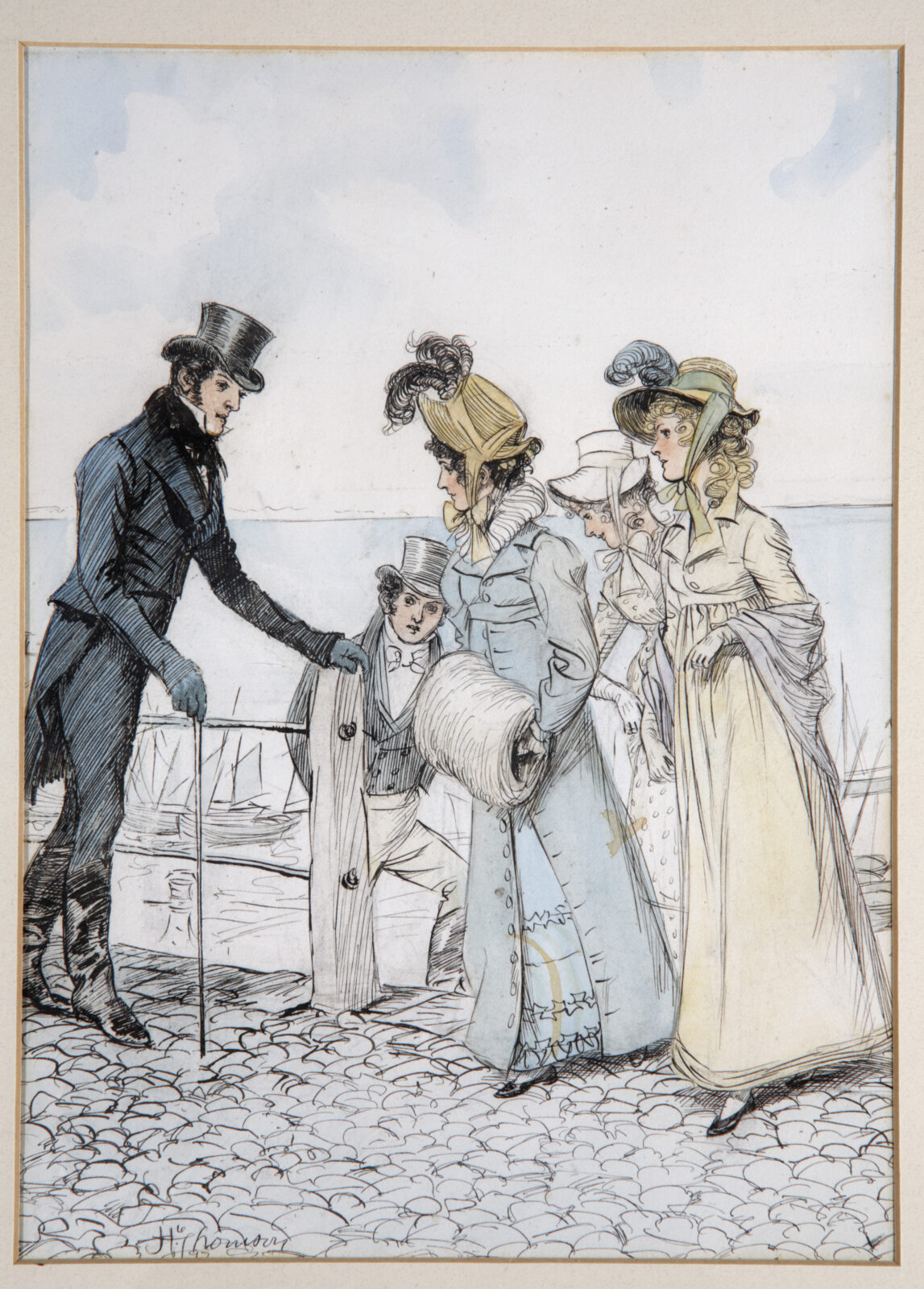Room 3: Holiday romance
‘They ascended and passed him; and as they passed, Anne’s face caught his eye, and he looked at her with a degree of earnest admiration, which she could not be insensible of.’ - PersuasionSeaside holidays are renowned for romance. Jane may have experienced a romance of her own, although sadly we do not know exactly what happened, as no letters from this period survive. A family story maintains that she met a young man in the summer of 1801, possibly at Sidmouth, possibly a clergyman. He had to leave to fulfil another engagement, but promised to return; however they then heard the tragedy that he had died.
Other holiday romances occur in the novels. In Pride & Prejudice Lydia Bennet and Wickham elope from Brighton, and in Persuasion Louisa Musgrove finds love with Captain Benwick during her convalescence in Lyme. Anne herself is restored to ‘the bloom and freshness of youth’ by Lyme’s ‘fine wind’ and catches the eye of Mr Elliot whilst walking on the Cobb, which Captain Wentworth notices at once:
‘Captain Wentworth looked round at her instantly in a way which shewed his noticing of it. He gave her a momentary glance,—a glance of brightness, which seemed to say, “That man is struck with you,— and even I, at this moment, see something like Anne Elliot again.” ’

First edition, Northanger Abbey and Persuasion, 1818
In Persuasion, Jane Austen paints an evocative picture of Lyme Regis and Charmouth. This almost tourist-brochure effusion of language is rarely seen in her work and suggests her own love of the sea, as well as the excitement that we all feel arriving at a holiday destination for the first time.
…’the remarkable situation of the town, the principal street almost hurrying into the water, the walk to the Cobb, skirting round the pleasant little bay, which in the season is animated with bathing machines and company, the Cobb itself, its old wonders and new improvements, with the very beautiful line of cliffs stretching out to the east of the town, are what the stranger’s eye will seek; and a very strange stranger it must be, who does not see charms in the immediate environs of Lyme, to make him wish to know it better. The scenes in its neighbourhood, Charmouth, with its high grounds and extensive sweeps of country, and still more its sweet retired bay, backed by dark cliffs, where fragments of low rock among the sands make it the happiest spot for watching the flow of the tide, for sitting in unwearied contemplation;—the woody varieties of the cheerful village of Up Lyme, and, above all, Pinny, with its green chasms between romantic rocks, where the scattered forest trees and orchards of luxuriant growth declare that many a generation must have passed away since the first partial falling of the cliff prepared the ground for such a state, where a scene so wonderful and so lovely is exhibited, as may more than equal any of the resembling scenes of the far-famed Isle of Wight: these places must be visited, and visited again, to make the worth of Lyme understood.’

